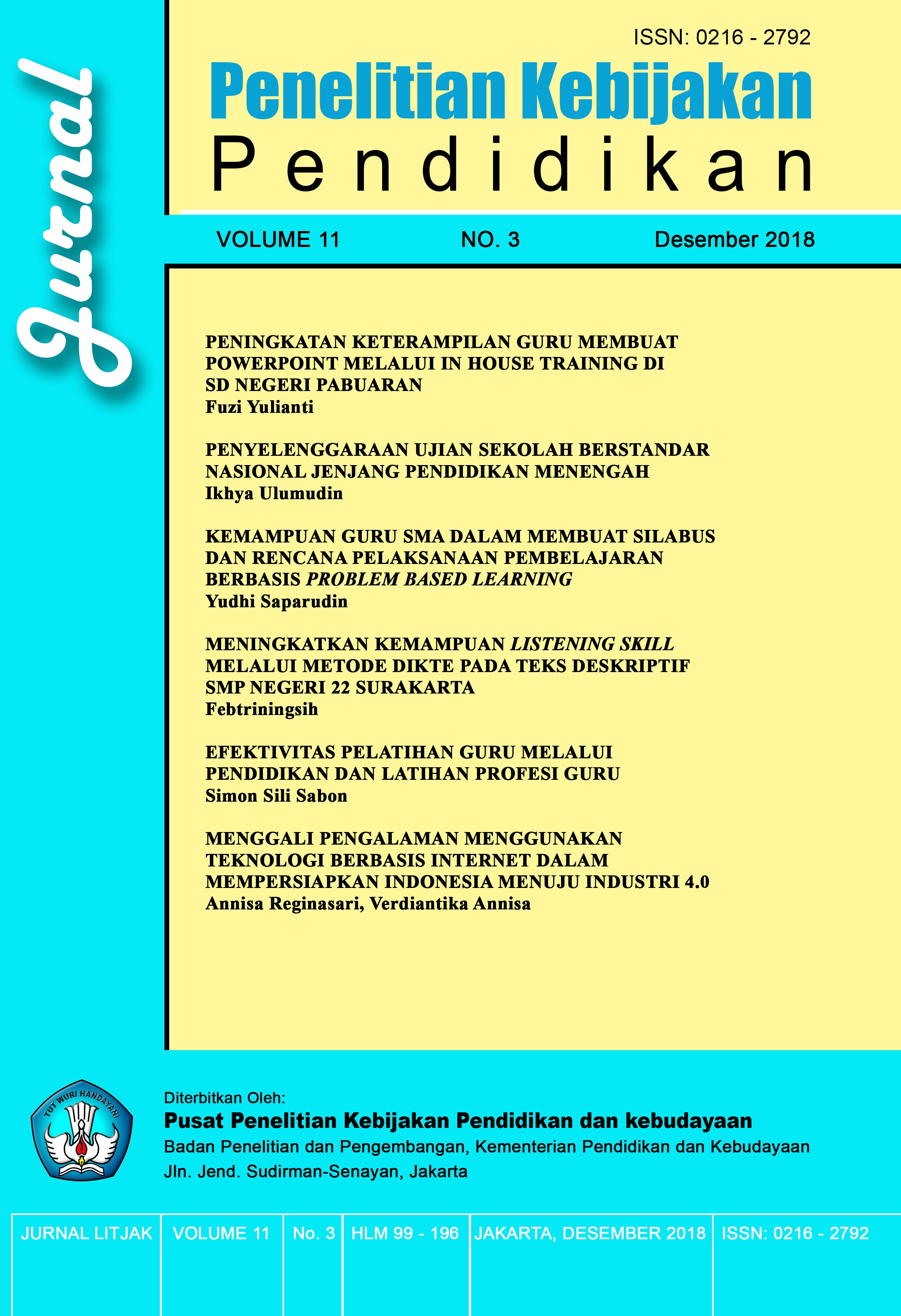THE IMPLEMENTATION OF SMART INDONESIA PROGRAM FOR THE RECIPIENTS OF CONVENTIONAL SMART INDONESIA CARD: THE STUDY IN FOUR DISTRICTS OF PRESIDENT’S WORKING VISITS IN 2017
DOI:
https://doi.org/10.24832/jpkp.v11i2.225Keywords:
disbursement, Smart Indonesia Card, Smart Indonesia Program, target accuracy, utilizationAbstract
Smart Indonesia Program is the Government’s flagship program to keep school-age children from underprivileged families remain in schools. However, its implementation has reportedly met various obstacles. This study aim to explore these problems by focusing on three aspects: target accuracy, disbursement, and utilization. Using a qualitative approach, the study was conducted in four districts of President Jokowi’s working visits in 2017, namely: Banyumas District, Malang District, Tasikmalaya City, and Temanggung District. Although since August 2017, the Government has begun to replace the Smart Indonesia Card system from conventional to the one integrated with ATM system, this study targeted the conventional KIP recipients because they remained 75% of the population. Through focus group discussions and questionnaires, this study found some recipients were not qualified; administration literacy of parents was among the reasons behind the funds’ slow disbursement; and the use of funds was generally in accordance with the rules despite several opposite cases. To conclude, the implementation of Smart Indonesia Program does show some significant progress, even though there are rooms for improvement. Several policy options to recommend are: accelerating database synchronization; providing mentoring facilities in the field; and developing a monitoring system based on parental responsibility.
Downloads
Published
Issue
Section
License
Copyright (c) 2019 Jurnal Penelitian Kebijakan Pendidikan

This work is licensed under a Creative Commons Attribution-NonCommercial-ShareAlike 4.0 International License.
Copyright Notice
All articles submitted by the author and published in the Jurnal Penelitaian Kebijakan Pendidikan are fully copyrighted by the publication of Jurnal Penelitaian Kebijakan Pendidikan under Attribution-NonCommercial-ShareAlike 4.0 International (CC BY-NC-SA 4.0) by technically filling out the copyright transfer agreement and sending it to the publisher
Note :
The author can include in separate contractual arrangements for the non-exclusive distribution of rich versions of journal publications (for example: posting them to an institutional repository or publishing them in a book), with the acknowledgment of their initial publication in this journal.
Authors are permitted and encouraged to post their work online (for example: in an institutional repository or on their website) before and during the submission process because it can lead to productive exchanges, as well as earlier and more powerful citations of published works. (See Open Access Effects).


















